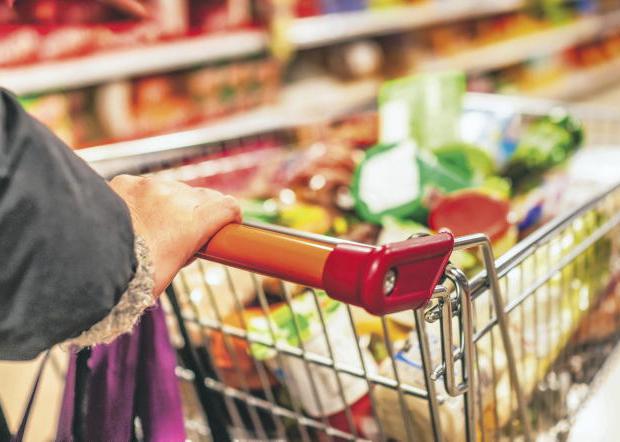How much of a factor is convenience when it comes to our food purchases?
We know, thanks to Bord Bia’s Consumer Trends report, that Irish consumers are increasingly busy – otherwise known as “time-poor”.
Often, with two parents working full-time jobs, no one is home to prepare as many meals from scratch or spend as much time shopping.
This had led to technological innovations (like automated checkouts and other time-saving shopping experiences), but also an increased focus on brands to produce convenience foods which tick the boxes the modern-day, time-poor consumer is looking for.
As a result, we still see a lot of pre-cooked or frozen vegetables, marinated meats, pre-cooked sauces and frozen dinners. However, during the pandemic, we also saw Irish consumers shift their attitudes towards cooking elaborate meals. They finally had the time to cook from scratch and many attempted to recreate the flavours they missed from dining out.
According to Bord Bia, today’s consumer wants convenience, but they don’t want to skimp on nutrition or quality
At this time, we saw vegetable box schemes shoot up in popularity, as well as online farmers markets like Neighbourfood, where primary producers were directly supported within their regions.
According to Bord Bia, today’s consumer wants convenience, but they don’t want to skimp on nutrition or quality. This is leading to the development of new products and services which will specifically address these demands. That said, there are still plenty of consumers (myself included), who rely on basic family-friendly convenience meals – like chicken nuggets or Donegal Catch – a few times per week.
We have seen an increase in convenience in different ways particularly; as people are returning to their offices, classrooms after COVID
Prof Joe Brogue and Dr Lana Repar teach at UCC’s Cork University Business School in the Department of Food Business and Development. They say that since society has reopened and people are going back to work and school, there are many new factors which drive convenience food purchases.
“We have seen an increase in convenience in different ways particularly; as people are returning to their offices, classrooms after COVID,” they write in correspondence with Irish Country Living. “During COVID, we saw an increased interest in health and cooking. However, it will be interesting to see how much of that remains after consumers are back to commuting, in their offices and in the gym.
“Busy lives, lack of cooking skills and even food waste [are all factors in convenience purchases],” they add. “There is an increasing range of convenient food options that cater for today’s time-poor consumers.”
You can understand where Irish consumers are coming from; particularly if they want to tackle household food waste – when ingredients are pre-portioned and ready to cook, they are less likely to be wasted. There are often other factors at play, though.
At the end of the day, convenience meals tend to cost more than raw ingredients, so consumers need to balance which is more important – their time or their pocketbook (which, as my colleague Ciara outlines, is becoming increasingly important to consider).
In some cases, consumers need to make trade-offs related to taste, nutritional value, price and time efficiency when it comes to convenient foods
In my household, convenience purchases are always ones I know my children will eat – frozen pizzas and oven chips being the usual suspects. While they are indeed convenient and I know there will be little waste - we are also losing out on nutritional density with these meals.
“In some cases, consumers need to make trade-offs related to taste, nutritional value, price and time efficiency when it comes to convenient foods,” Joe and Lana explain. “Some convenience meals may be of lower nutritional value, but do have a role in the modern diet for specific time and occasions. Particularly with the time-poor consumer during midweek, where there are various activities competing for time.”
With Irish vegetable growers struggling to make ends meet, you have to wonder if our increasingly busy lives and these tendencies toward convenience-type meals are having an effect on the livelihoods of primary producers. Prepared food items, even if they are Irish, rarely use Irish vegetables as we rely heavily on fruit and vegetable imports. Lana and Joe say pre-packed vegetables are simply very easy to use and cook, and they don’t see consumer behaviour changing in this regard.
“Another factor is waste related to vegetables and fruit,” they write. “By buying specific amounts, it is more encouraging for consumers to use ingredients up. However, even with pre-packed fresh vegetables, for consumers it might be difficult to balance the lack of time for cooking and short shelf life – so many consumers are switching to frozen ready meals with vegetables, which can be consumed at the desired time.”
Read more
Kepak and TU Dublin partnership looks at long-term culinary science innovation
Not (im)possible plant protein
How much of a factor is convenience when it comes to our food purchases?
We know, thanks to Bord Bia’s Consumer Trends report, that Irish consumers are increasingly busy – otherwise known as “time-poor”.
Often, with two parents working full-time jobs, no one is home to prepare as many meals from scratch or spend as much time shopping.
This had led to technological innovations (like automated checkouts and other time-saving shopping experiences), but also an increased focus on brands to produce convenience foods which tick the boxes the modern-day, time-poor consumer is looking for.
As a result, we still see a lot of pre-cooked or frozen vegetables, marinated meats, pre-cooked sauces and frozen dinners. However, during the pandemic, we also saw Irish consumers shift their attitudes towards cooking elaborate meals. They finally had the time to cook from scratch and many attempted to recreate the flavours they missed from dining out.
According to Bord Bia, today’s consumer wants convenience, but they don’t want to skimp on nutrition or quality
At this time, we saw vegetable box schemes shoot up in popularity, as well as online farmers markets like Neighbourfood, where primary producers were directly supported within their regions.
According to Bord Bia, today’s consumer wants convenience, but they don’t want to skimp on nutrition or quality. This is leading to the development of new products and services which will specifically address these demands. That said, there are still plenty of consumers (myself included), who rely on basic family-friendly convenience meals – like chicken nuggets or Donegal Catch – a few times per week.
We have seen an increase in convenience in different ways particularly; as people are returning to their offices, classrooms after COVID
Prof Joe Brogue and Dr Lana Repar teach at UCC’s Cork University Business School in the Department of Food Business and Development. They say that since society has reopened and people are going back to work and school, there are many new factors which drive convenience food purchases.
“We have seen an increase in convenience in different ways particularly; as people are returning to their offices, classrooms after COVID,” they write in correspondence with Irish Country Living. “During COVID, we saw an increased interest in health and cooking. However, it will be interesting to see how much of that remains after consumers are back to commuting, in their offices and in the gym.
“Busy lives, lack of cooking skills and even food waste [are all factors in convenience purchases],” they add. “There is an increasing range of convenient food options that cater for today’s time-poor consumers.”
You can understand where Irish consumers are coming from; particularly if they want to tackle household food waste – when ingredients are pre-portioned and ready to cook, they are less likely to be wasted. There are often other factors at play, though.
At the end of the day, convenience meals tend to cost more than raw ingredients, so consumers need to balance which is more important – their time or their pocketbook (which, as my colleague Ciara outlines, is becoming increasingly important to consider).
In some cases, consumers need to make trade-offs related to taste, nutritional value, price and time efficiency when it comes to convenient foods
In my household, convenience purchases are always ones I know my children will eat – frozen pizzas and oven chips being the usual suspects. While they are indeed convenient and I know there will be little waste - we are also losing out on nutritional density with these meals.
“In some cases, consumers need to make trade-offs related to taste, nutritional value, price and time efficiency when it comes to convenient foods,” Joe and Lana explain. “Some convenience meals may be of lower nutritional value, but do have a role in the modern diet for specific time and occasions. Particularly with the time-poor consumer during midweek, where there are various activities competing for time.”
With Irish vegetable growers struggling to make ends meet, you have to wonder if our increasingly busy lives and these tendencies toward convenience-type meals are having an effect on the livelihoods of primary producers. Prepared food items, even if they are Irish, rarely use Irish vegetables as we rely heavily on fruit and vegetable imports. Lana and Joe say pre-packed vegetables are simply very easy to use and cook, and they don’t see consumer behaviour changing in this regard.
“Another factor is waste related to vegetables and fruit,” they write. “By buying specific amounts, it is more encouraging for consumers to use ingredients up. However, even with pre-packed fresh vegetables, for consumers it might be difficult to balance the lack of time for cooking and short shelf life – so many consumers are switching to frozen ready meals with vegetables, which can be consumed at the desired time.”
Read more
Kepak and TU Dublin partnership looks at long-term culinary science innovation
Not (im)possible plant protein









SHARING OPTIONS